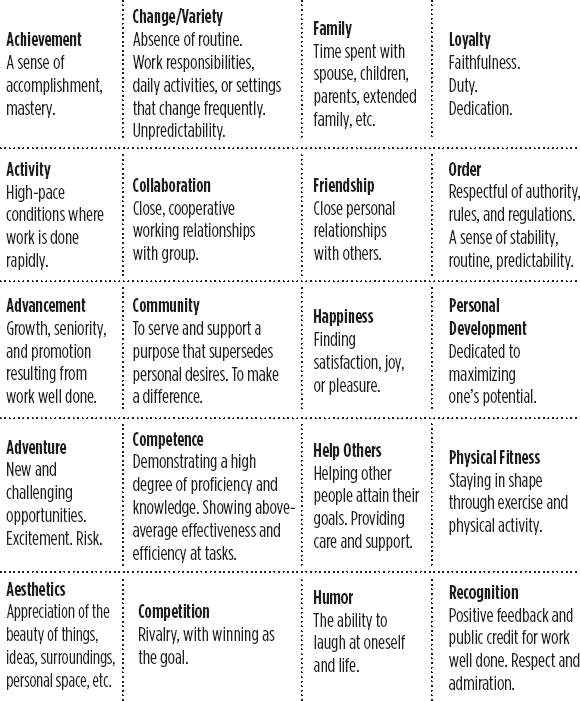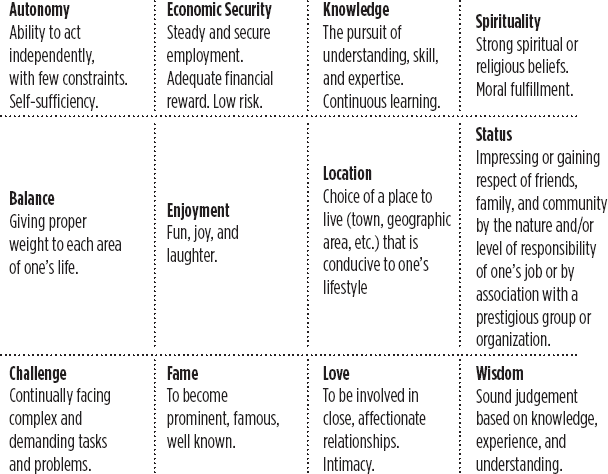How to Define and Cultivate an Aspirational Brand

Now that you have completed an analysis of your current leadership brand, what’s next? How do you use what you’ve learned?
The most successful leaders continue to develop throughout their careers in order to reach their full potential. If you want to model that behavior, think about where you are today and where you would like to head in the future.
An authentic leadership brand will align with your sense of purpose, your values, and what matters to you most. It will reflect the roles you play, the work you spend the most time doing, how you interact with others, and the leadership contribution you consistently make.
You may find, though, that your current leadership brand isn’t aligned with your values or with how you want to be known. In fact, your current brand may be limiting you as you search for new roles and opportunities. You may find yourself wanting people to know who you really are and what you are capable of.
If that’s the case, defining and developing an aspirational brand grounded in your true values can help you move forward and reach your goals.
Grounding Your Aspirational Brand in Authenticity
Being authentic is about leading in a way that is natural for you and a reflection of your individual style and strengths. Feeling authentic and living a life strongly connected to your belief system can be energizing and can promote growth, learning, and psychological well-being.
If you try to be someone that you aren’t, eventually others will see through your deception. Your inauthenticity can become a disruptive force in the organization as others talk about and try to anticipate what you might do next. You can even end up derailing your career.
How do you develop an aspirational brand that will reflect your innermost, authentic self? Before you make any changes, be sure to get a truthful picture of your current image. Take time to understand how others see you and why. Seek input from colleagues, your boss, and direct reports. Ask your friends, children, spouse, or significant other. Each of these points of view will provide insights into how your words and behaviors are viewed by the people around you.
Next, remind yourself that genuine change is rarely dramatic. Leaders making radical changes overnight are likely to be viewed with suspicion. Small, incremental changes that mesh with your values are more likely to be sustainable—and believed.
With that in mind, consider the gap between the image others have of you and the image you wish you were projecting. Decide what you could immediately begin working on and focus on one or two areas where small improvements could have the greatest benefit.
Techniques for Evolving Your Brand
Here are a few techniques you might try as you begin to evolve toward your aspirational leadership brand and change how you interact with others to help create direction, alignment, and commitment.
Tell stories. Give memorable examples that can engage others and interest them in what you are saying. Describe what happened, how a problem was solved, or how someone did something notable.
Master your message. Focus on clarity of thought and message and think carefully about what you want to say. Every question and conversation is an opportunity to share your ideas, vision, and values.
Focus on “we.” Use inclusive language like “we” and “us” in order to inspire others and promote collaboration.
Smile. Tap into your personal warmth. Leaders who project a friendly image are typically perceived as more effective, engaging, and interesting.
Find a mentor, coach, and/or a trusted colleague. Solicit ideas on how you can address especially challenging issues and improve your leadership effectiveness and brand.
Exercise: Linking Your Brand to Your Values
The list of values below is derived from a set of values used in CCL leadership development programs. This tool helps us ensure the development goals of leaders participating in our programs align with the important values they seek to live and work by. These values can be useful as you evaluate how to link your aspirational brand to the things that matter most to you.


STEP 1: What do you stand for?
• Make a paper copy of the values chart. Cut out each label to create a set of 44. Sort the labels into the following categories:
- Always Valued
- Often Valued
- Sometimes Valued
- Seldom Valued
- Rarely Valued
• Stand back and look at the results of your sort. Does anything surprise you?
• Five years ago, would you have categorized any of the values differently? If so, why?
• Examine the values you placed under “Always Valued.” Which resonate with you most deeply and reflect the inner you?
• Which values do you want to aspire to develop over the next five years?
STEP 2: What outcomes do you hope to achieve?
Think about the stakeholders you have served over the last couple of years, both internal and external to your organization.
• Who were they?
• What did they want?
• What projects did you work on during this time? What did you find challenging?
• What aspects of these projects were the most enjoyable and why?
• What aspects do you think brought out the best in you and why?
• What unique skills, knowledge, attitudes, and behaviors did you bring to the work?
• What feedback did you receive directly or indirectly?
STEP 3: How does your work connect with your values?
Now let’s connect the stories of your projects with the values you identified in Step 1. In what ways were your values at play in those projects? From feedback you received, what did others notice and value about your work and their interactions with you? As you reflect, are any values important to you missing from the list we provided? Are there any that you now would categorize differently?
STEP 4: What do you want to be known for?
Based on what you like to do and what you consider fun and challenging, what do you aspire to be known for in the future? What stakeholders will you serve? What needs do you hope to fulfill in a unique way? How well does this aspirational view of your brand match the values you cherish the most?
STEP 5: What is your unique contribution?
If you were to summarize the unique contribution you hope to bring to projects, what would your tagline be?
One way to craft your own tagline is to create a catchphrase and/or an image that illustrates the essence of your leadership brand. As you think about your tagline, consider what you stand for and what you deliver. Your tagline should also convey your spirit succinctly so others understand your meaning even if they have never met you. Find a symbol or an image that portrays the essence of your brand, and combine it with a catchphrase that best matches the promise you want your brand to make. Then, share the slogan with others and get feedback. Does it fit you? Does it need changes? Once you’ve finalized your tagline, post it prominently and publicly, where it can serve as a reminder to you and others of the brand you aspire to.
STEP 6: Creating your brand summary.
Now let’s pull together the work you’ve done into a summary of your aspirational brand. Include the following:
• Your tagline.
EXAMPLE: “To be an inspiration to young people everywhere by helping them identify their unique gifts and talents.”
EXAMPLE: “To help my clients unlock their inner athlete and accomplish things they didn’t think were possible.”
• The services you will uniquely deliver to your stakeholders.
• Your top values and how they will influence the way you deliver your services.
• Create a poster with your brand summary, and display it where you can see it every day to keep you focused on the future you want to create.
STEP 7: Designing an action plan.
To bring your aspirational brand to life, it is important to take actions that will move you in the right direction. Here are some strategic steps that can help:
• Develop any new competencies you may need. If you aren’t yet where you want to be with your brand, you may need to focus on your leadership development plan. What new knowledge will you need to bring your aspirational brand to life, and how will you acquire it? What new skills, attitudes, and behaviors might you need to develop, and how will you develop them?
• Solicit help. Having an effective support network can be vital to your brand-building plan. Are there others you can approach for feedback and support, such as your boss or trusted colleagues?
• Assess your progress. Select a few key metrics to help you determine your progress in building your aspirational brand. Use metrics like the ones below to bring focus to the feedback you solicit about your work and to determine how effectively you are engaging with others in support of your shared direction, alignment, and commitment.
- Do others come to you for your opinion?
- Do others ask to work with you?
- How often do others come to you with new opportunities or challenges?
- Are you receiving feedback on things you are trying to do more of or less of?
- How many times do you do something you’ve wanted to start doing?
- Are you managing your time well, meeting deadlines, and accomplishing your goals?
- Are you setting goals and working to achieve them?

